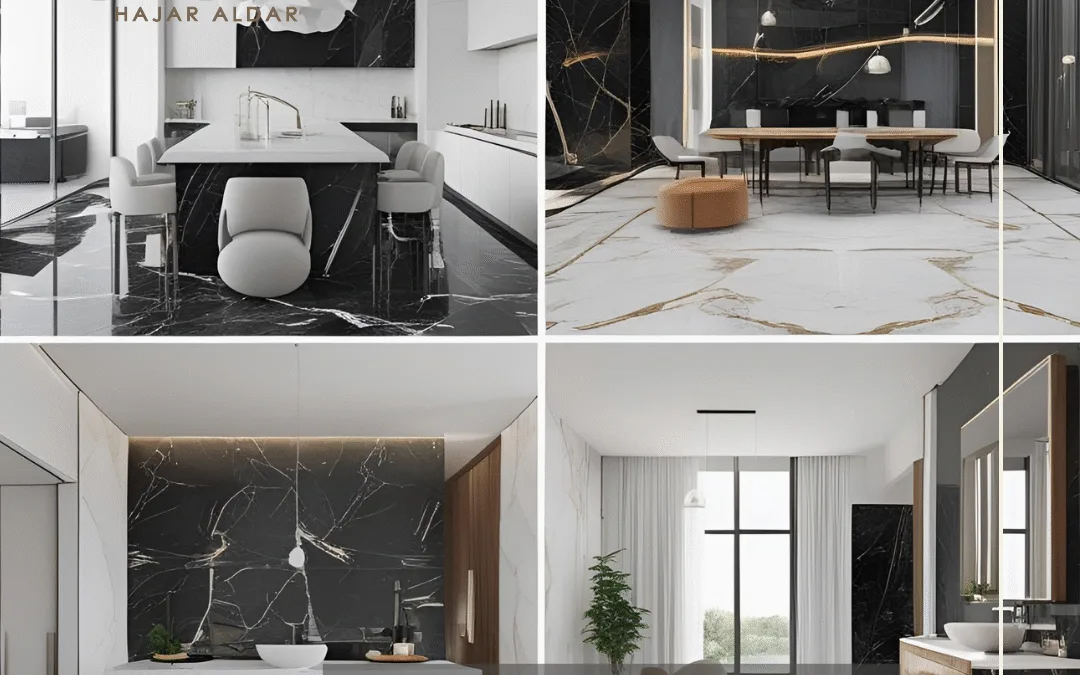Is Marble Still Desired in Modern Design?
Introduction
In a world where architectural tastes change rapidly and notions of beauty and simplicity are constantly redefined, marble remains a strong presence, defying fast design trends and standing firm as a timeless material. Despite the recent rise of minimalism and modern synthetic materials, marble has proven that it is more than just a luxury stone—it is a design element that continuously renews itself.
So, is marble still desired in contemporary design? The simple answer: yes, and strongly so. This article explores marble’s place in modern design, the reasons behind its enduring appeal, and its transformations that make it perfectly suited for today’s aesthetic with elegance and versatility.
Marble Between Classic and Contemporary
Historically, marble has been associated with palaces, temples, and royal spaces—a symbol of pure luxury and wealth. But as aesthetic concepts evolved, designers started integrating marble in more balanced and modern ways. Today, marble is not only used for columns or floors but also appears in finer details: kitchen countertops, side tables, TV walls, and lamp covers.
This shift from classical use to modern application confirms marble’s adaptability to changing décor styles.
Why Does Marble Remain a Favorite?
-
Natural Beauty That Cannot Be Manufactured
Marble is a natural material with unique veins that cannot be artificially replicated. Each marble piece is a work of art by itself, adding a unique and lively character to any design. -
High Color Flexibility
Contrary to popular belief, marble is not limited to white. It comes in black, gray, green, pink, beige, and even blue varieties. This color diversity allows easy integration with different design styles. -
Balance Between Luxury and Simplicity
Marble can reflect luxury without being ostentatious. When paired with natural light and wooden or metal details, it becomes an element that adds soft elegance without extravagance. -
Long Life and Durability
Marble withstands the test of time. With proper care, it can retain its shine and appeal for decades.
How Is Marble Used in Modern Design?
-
Marble in Open Kitchens
Marble has become an ideal choice for countertops and open kitchen islands. White marble with gray veins creates a clean and bright look, while dark marble offers a dramatic and bold character. -
TV Walls and Interior Facades
Using marble as a background for TV walls is a popular trend. It gives the wall an artistic presence, eliminating the need for excessive decoration. -
Side Tables and Living Room Furniture
Marble now appears in small tables, sometimes combined with metal bases in round tables. It is also paired with wooden legs to create a contrast between cold stone and natural warmth. -
Bathrooms
Contemporary bathrooms increasingly use marble in floors, vanity tops, and back walls, adding a luxurious touch even to small spaces. -
Lighting and Light Decor
Marble appears in accessories too: lamp bases, candle holders, and even handles—showcasing its ability to subtly enter modern spaces without overpowering them.
Technological Innovations and Ease of Use
Modern technology has made marble more practical today:
-
Thinner marble slabs facilitate installation without excessive weight.
-
Surface treatments increase resistance to stains and water.
-
Recycled marble options provide eco-friendly choices.
-
3D printing can create marble-like materials at a lower cost for visual applications.
All these advances have made marble accessible to young designers and mid-range projects—not just high-end luxury.
Is Marble Limited to Interiors Only?
Marble is also used outdoors, especially in balcony designs, garden tables, and even exterior wall cladding. Weather-resistant types like dark marble are widely used in contemporary facades.
Fashion Supports It
Notably, many high-end brands like Gucci and Fendi incorporate marble in their store designs. It’s also used in trendy cafés and restaurants, enhancing its presence in public awareness as a symbol of modern elegance.
Challenges and Alternatives
Despite all its advantages, marble can be expensive and requires maintenance. It is susceptible to scratches and stains. This has led to alternatives such as:
-
Porcelain with marble designs.
-
Vinyl flooring with marble patterns.
-
Engineered quartz.
Yet the difference remains clear in the touch, coolness, and realism between real marble and these substitutes.
Conclusion
Marble has not become outdated; it has kept pace and even led other materials with its ability to renew and adapt. It is more than a natural stone; it is a design language expressing contemporary simplicity and refined luxury simultaneously. In an era where people seek authenticity, sustainability, and beauty, marble remains a timeless choice fulfilling all these desires.
Whether you are a designer, a project owner, or simply a lover of natural beauty, marble deserves a place on your list—not because it is old, but because it is “renewed old”… and that is the secret to lasting presence in the design world.


